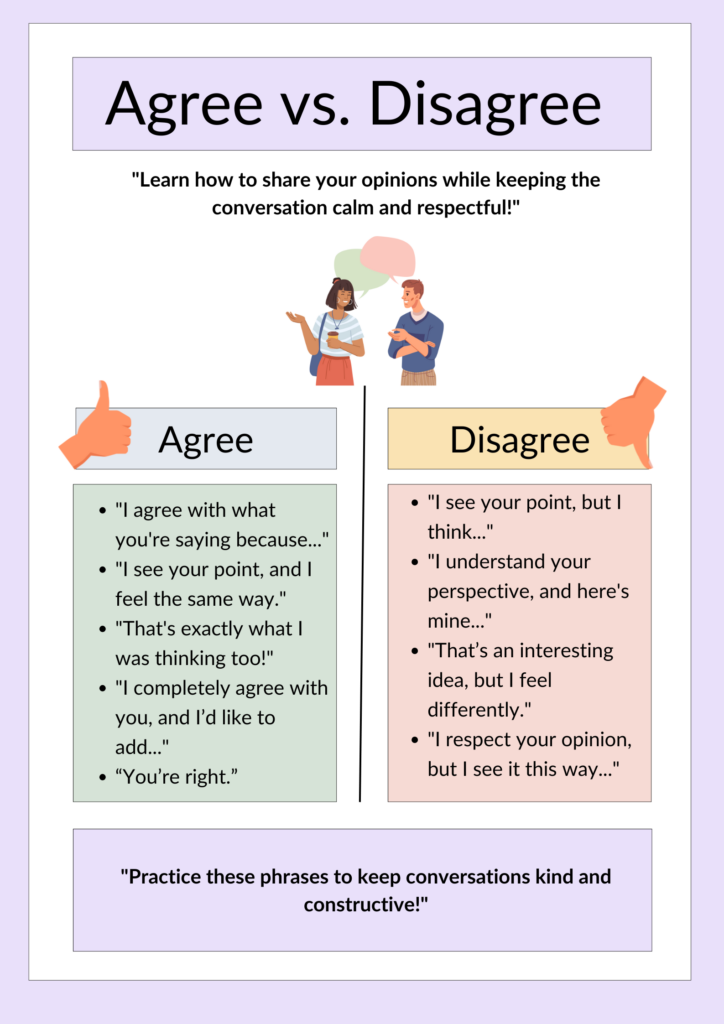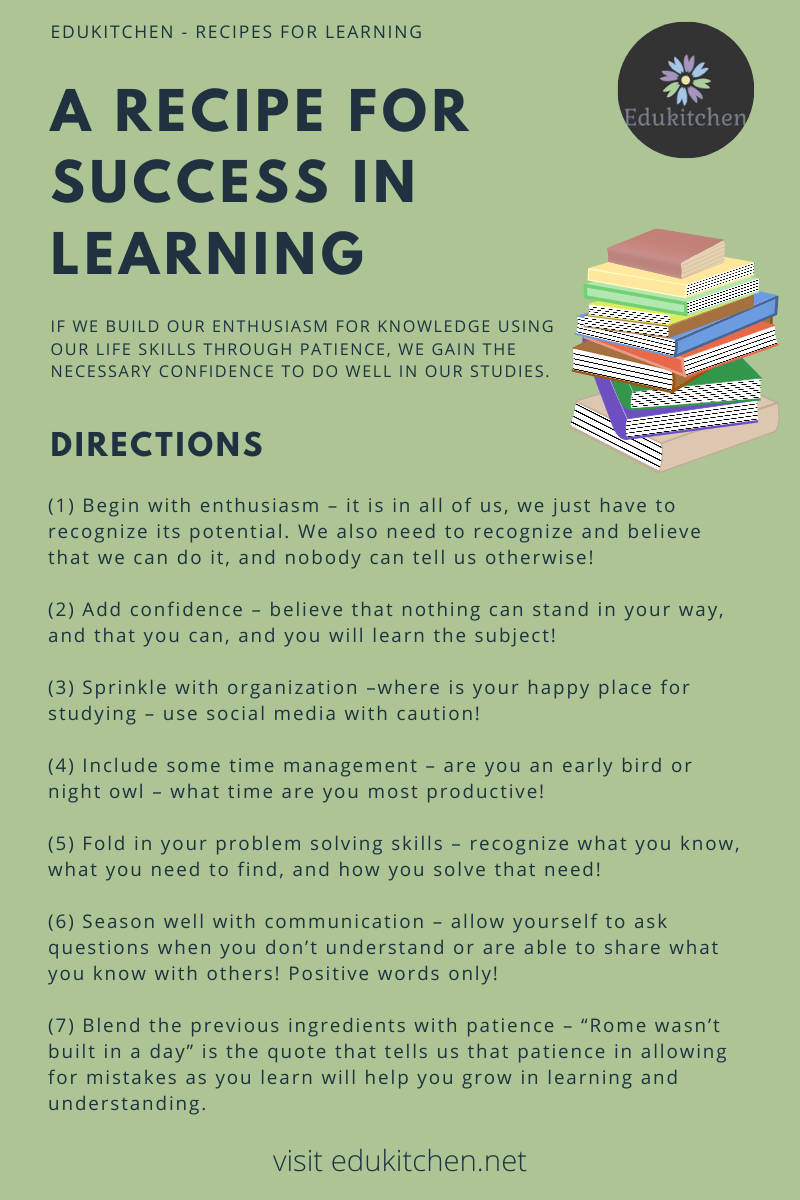In homeschooling, we strive to teach our children not only academic subjects but also essential life skills. Teaching kids to master the art of communication is one of the most valuable skills they can learn. The art of communication is essential for their success.

How to express their opinions respectfully and engage in meaningful discussions helps them with mastering the art of communication, which then leads to helping them mastering the art of conversation. Emphasizing the art of communication is vital for their growth.
Whether they are debating a topic in a history lesson or discussing their favorite books, knowing how to agree or disagree politely is a crucial skill that will serve them throughout their lives.
Why Teaching Respectful Communication Matters
Polite disagreement and respectful agreement help children develop confidence, emotional intelligence, and critical thinking. When kids learn how to express their thoughts clearly and listen to others, they become better communicators and problem-solvers.
By focusing on the art of communication, children not only improve their verbal skills but also learn to listen actively.

The art of communication is crucial in developing strong relationships and ensuring successful interactions.
By teaching our children these skills early, we help them build strong relationships, navigate social situations with ease, and approach conflicts in a constructive manner. These abilities are especially important in today’s world, where conversations often take place in digital spaces where misunderstandings can quickly escalate.
Understanding the nuances of the art of communication can also lead to improved conflict resolution skills.
Why Teach Polite Agreement and Disagreement?
Children often have strong opinions, but knowing how to share them constructively can be a challenge. Learning to agree and disagree politely helps kids:

Utilizing resources that emphasize the art of communication can significantly enhance their learning experience.
- Build confidence in expressing their thoughts
- Develop critical thinking skills
- Foster empathy and understanding
- Avoid unnecessary conflict and frustration
How to Teach Agreement and Disagreement in Your Homeschool
Our Agree vs. Disagree Communication Poster is a great visual tool to reinforce these concepts. Here’s how you can incorporate it into your homeschool routine:

1. Model the Behavior
Children learn best by example. Use polite language when agreeing or disagreeing with their ideas. For instance:
Role-playing scenarios focusing on the art of communication can provide children with practical experience in real-life situations.
- “That’s exactly what I was thinking too!”
- “I see your point, but I think…”
2. Use the Poster as a Reference
Encouraging children to practice the art of communication in everyday conversations will help solidify their understanding.
Hang the Agree vs. Disagree Communication Poster in your homeschool area. This resource provides sentence starters and reminders for polite discussions. Encourage your child to refer to it during conversations.
3. Practice with Role-Playing
Give your child scenarios where they can practice agreeing and disagreeing in a respectful way. For example:
- Scenario 1: Two siblings have different opinions on the best type of pet.
- Scenario 2: A discussion about whether kids should use their mobile phones at the kitchen table.
Encourage them to use phrases from the poster such as “I respectfully disagree because…” or “That’s a great point! I agree because…”
4. Discuss Real-Life Situations
Watch a short educational video or read a story together, then have a discussion about the content. Challenge your child to share their opinion while using polite language from the poster.

5. Encourage Active Listening
Teaching agreement and disagreement isn’t just about what to say—it’s also about listening. Remind your child to:
- Wait until the other person is finished speaking.
- Acknowledge the other person’s viewpoint.
- Ask follow-up questions to show interest.
Utilizing our resources can help reinforce the art of communication effectively in your homeschooling curriculum.
Mastering the art of communication leads to long-term benefits, including improved social interactions and a greater understanding of diverse perspectives.
When children learn how to express themselves respectfully, they gain confidence in their ideas and become thoughtful, open-minded individuals. Whether they’re interacting with family, participating in co-op groups, or engaging in online discussions, these skills will help them communicate effectively and respectfully.

Incorporating our Agree vs. Disagree Communication Poster into your homeschool environment is an easy way to help your child develop strong communication skills. By modeling respectful discussion, practicing role-playing, and encouraging active listening, you can equip your child with the tools they need for lifelong success in conversations.
Using Our Agree vs. Disagree Poster for Better Conversations
One of the best ways to teach these skills in your homeschool classroom is by using a visual aid like our Agree vs. Disagree communication poster. This engaging resource provides key phrases and sentence starters to help children express their thoughts clearly and respectfully.

How Our Poster Helps:
✅ Provides Clear Examples – The poster includes simple yet effective phrases for both agreement and disagreement, such as:
Make the art of communication a focal point in family discussions to enhance understanding.
As you explore related topics, consider how the art of communication plays a role in each.
- “I see your point, and I feel the same way.”
- “I respect your opinion, but I see it this was…”
- “I agree with what you’re saying because…”
- “I understand your perspective, and here’s mine…”
✅ Encourages Thoughtful Discussion – Instead of shutting down conversations, children learn to build on ideas, ask questions, and provide reasons for their opinions.
✅ Creates a Safe Learning Environment – Kids feel more comfortable sharing their thoughts when they have the right words to do so.
✅ Enhances Social Skills – Whether in family discussions, homeschool group activities, or social interactions, children will be better equipped to communicate effectively.
The art of communication will serve them well in both personal and professional settings.
Simple Ways to Integrate the Poster into Your Lessons
- Role-Playing Exercises – Have children practice agreeing and disagreeing using the phrases on the poster.
- Debate Topics – Choose lighthearted topics (e.g., “Is pizza better than burgers?”) and encourage kids to use polite language while discussing.
- Story Discussions – After reading a book, ask your child if they agree or disagree with a character’s decision and why.
- Family Conversations – Use the phrases from the poster during dinner table discussions to reinforce positive communication habits.
Grammarly and the Art of Communication
This blog contains affiliate links to highlighted websites and/or resources. By clicking on the link and making a purchase we may earn a small commission at no extra cost to you. Click here for full disclosure.
Grammarly is a powerful tool for helping with writing as a form of communication in the homeschool classroom, providing real-time feedback on grammar, spelling, and writing clarity. It helps students refine their written communication skills while allowing parents or educators to gauge their progress in areas like sentence structure and vocabulary.

By identifying specific areas for improvement, Grammarly supports a growth-focused approach to learning, empowering students to build confidence in their writing through constructive, personalized feedback.
Consider taking advantage of the benefits grammarly brings to homeschooling parents and children in looking to help with honest language development. Click here to get all the grammar help you will need.
Extra Resources to Explore the Art of Communication
Check out our resources to further explore the art of communication!
- Ice Breakers
- English Lanaguage Arts Teaching Resources
- Elementary ELA Worksheets
- Middle ELA Worksheets
- High School ELA Worksheets
- Mental Health Teaching Resources for Student Wellness
Related Topics
Connect to our other pages as you navigate through our website. Explore what these pages have to offer you and you will be glad you did!
- Six Summer Time Activities At Home Kids Will Love
- 5 Ways to Improve Physical Health in Kids At Home
- The Influence of Parents on Education Policy
- How Laughter Makes Learning Fun and Effective for Kids
- Helping Parents Understand Online Learning Platforms
- 10 Top Brain Foods for Students
- 5 Ways to Improve Communication Skills in Kids
Join Our Newsletter Community Today!

Final Thoughts
Teaching kids how to agree or disagree politely is a valuable skill that will benefit them throughout life. By incorporating our Agree vs. Disagree communication poster into your homeschool lessons, you provide them with the language and confidence to engage in respectful, thoughtful discussions.

Check out our Agree vs. Disagree poster today and make communication a strength in your homeschool classroom!
Share Your Thoughts…
Leave us a comment below to let us know your thoughts on our approach to helping kids master the art of communication, so that they can then master the art of conversation both inside and outside the home.



